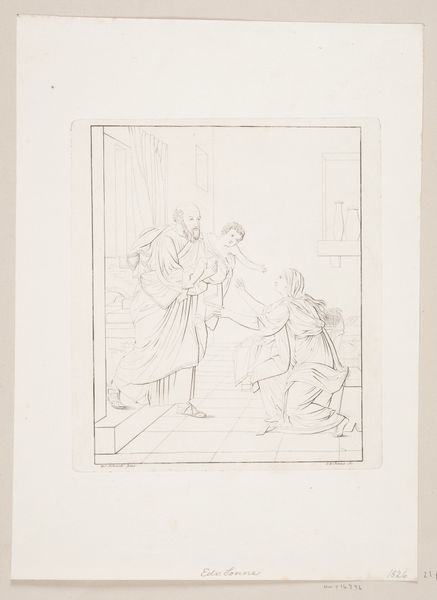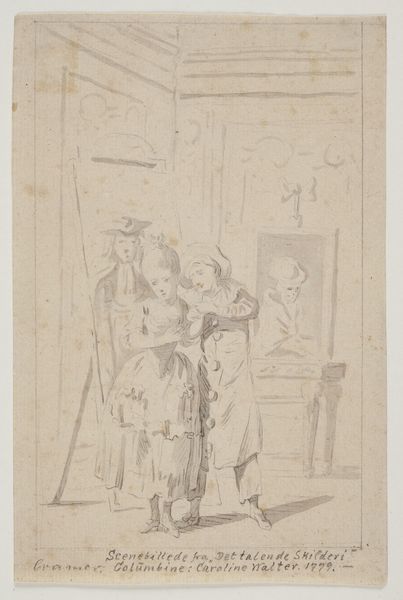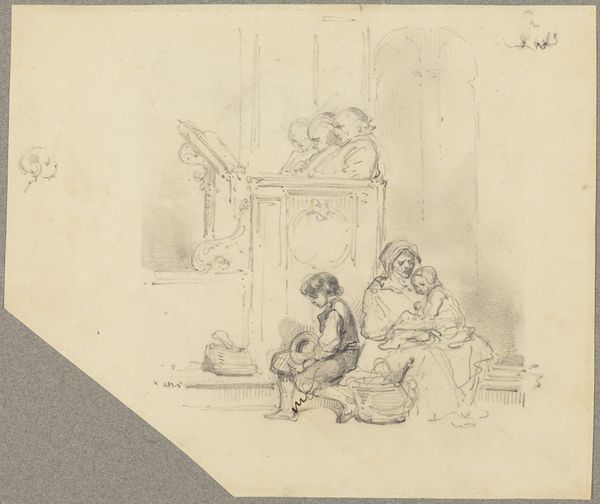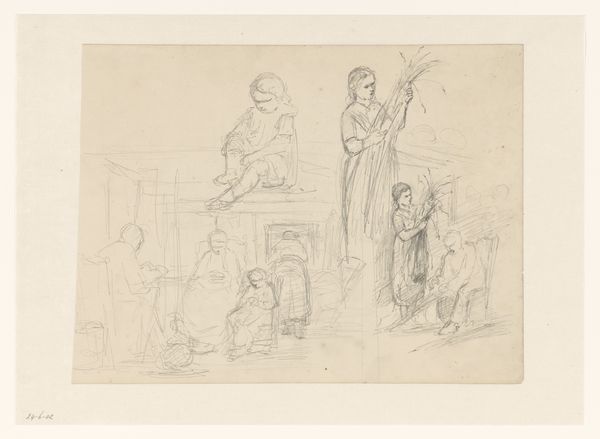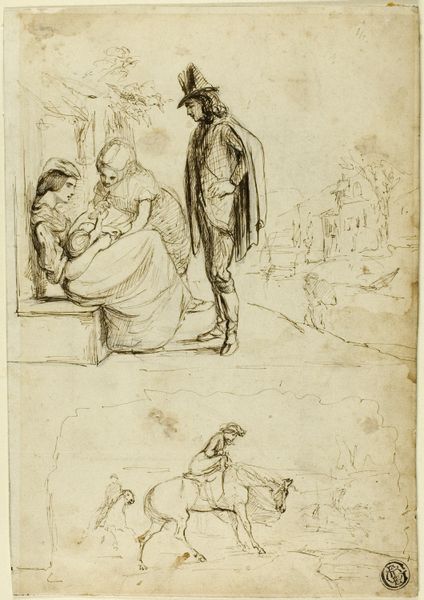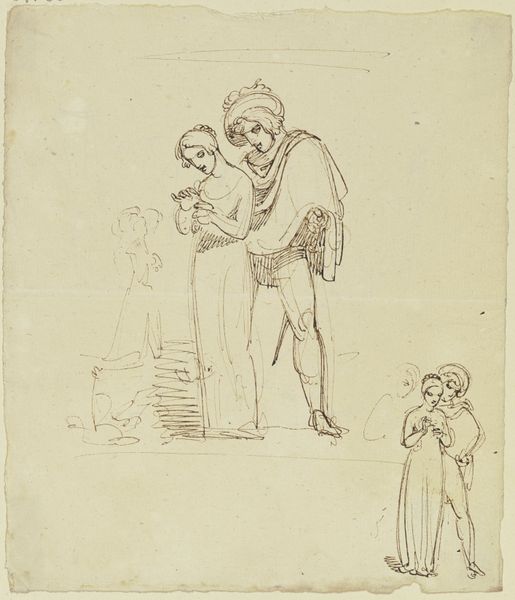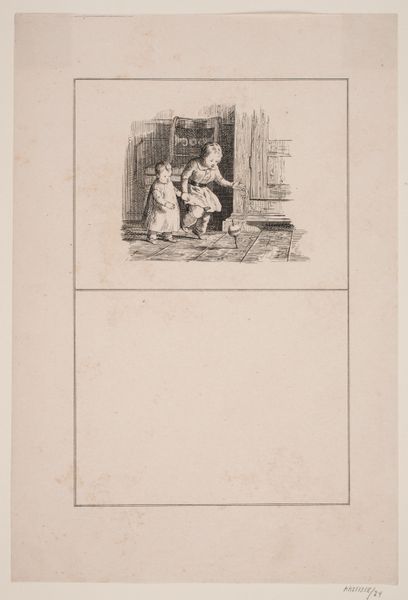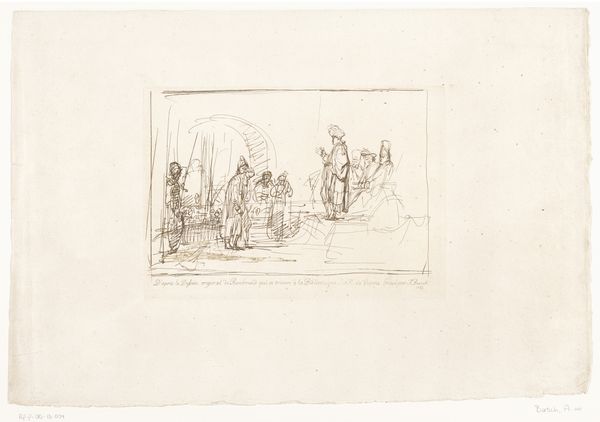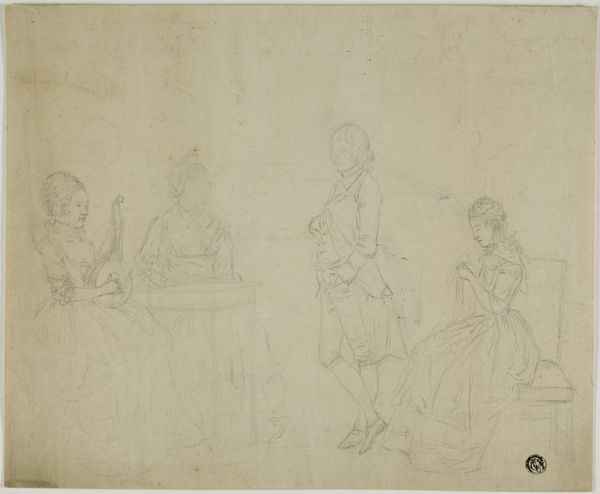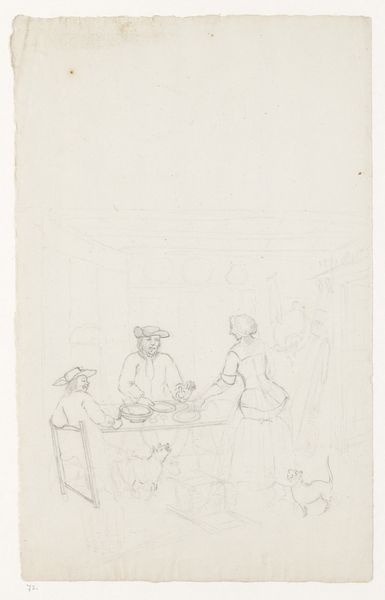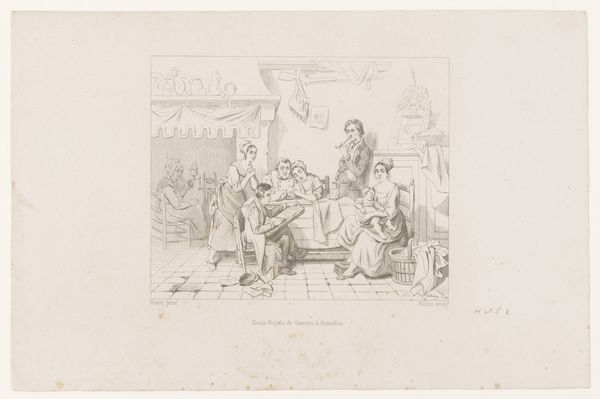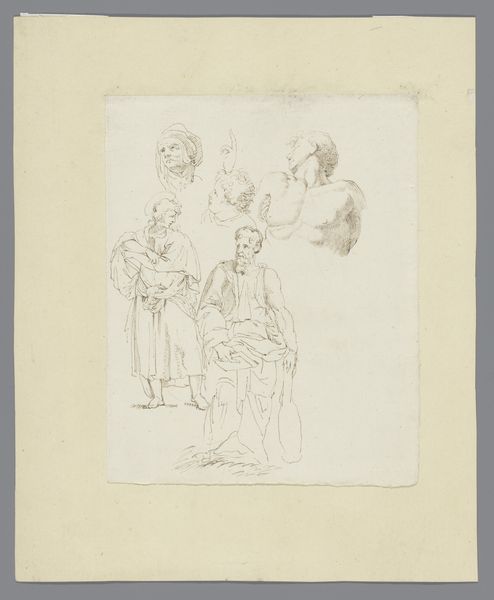
Voornaam paar in 17e eeuws kostuum en voornaam gezelschap op de trappen van een terras 1825 - 1899
0:00
0:00
alexanderschaepkens
Rijksmuseum
drawing, pencil
#
drawing
#
toned paper
#
light pencil work
#
pencil sketch
#
sketch book
#
figuration
#
personal sketchbook
#
idea generation sketch
#
sketchwork
#
pencil
#
sketchbook drawing
#
genre-painting
#
storyboard and sketchbook work
#
sketchbook art
Dimensions: height 225 mm, width 194 mm
Copyright: Rijks Museum: Open Domain
Curator: This delicate drawing, "Voornaam paar in 17e eeuws kostuum en voornaam gezelschap op de trappen van een terras," created between 1825 and 1899 by Alexander Schaepkens, presents us with a glimpse into another era. The Rijksmuseum houses this captivating work rendered in pencil. Editor: It looks like a whisper, doesn’t it? Ethereal. Almost like a dream you're trying to hold onto as you wake. Curator: The use of pencil on toned paper invites us to consider how historical depictions can, in their own way, reconstruct identity and societal norms. Editor: Agreed! It’s interesting, these figures frozen in time. Makes you wonder about their stories. And, given the artist's choice of media, are we seeing history, or just a possibility of it, viewed through Schaepkens' own creative lens? Curator: Indeed. Genre painting serves as a potent platform to express—or perhaps, reinforce—prevailing cultural values. The figures here appear to be members of the upper class in formal attire, which signals to viewers expectations of refinement, affluence, and social order. It invites us to consider who is centered in the art world and who gets left out of the historical record. Editor: And look at that composition! Upper group on one plane, the other descending the staircase. Reminds me of a stage play...a little like people acting at being elegant. Do you get that sense? A performance of sorts? Curator: Absolutely. The artist constructs an interplay between observer and observed, and it reflects the historical era when societal strata determined one's role in the social performance of life. These aesthetic choices mirror that performance in their form. Editor: Beautifully said. Thinking about this sketch makes me appreciate how something so minimal, a few strokes of pencil, can conjure whole worlds, feelings, stories... It feels fragile, and precious, and fleeting all at once. Curator: Schaepkens offers us a valuable insight. The drawing may act as a poignant reflection on privilege, power, and the ever-present role of social expectations that shaped the world, both then and now. Editor: It’s like peering through a keyhole. Lovely.
Comments
No comments
Be the first to comment and join the conversation on the ultimate creative platform.
